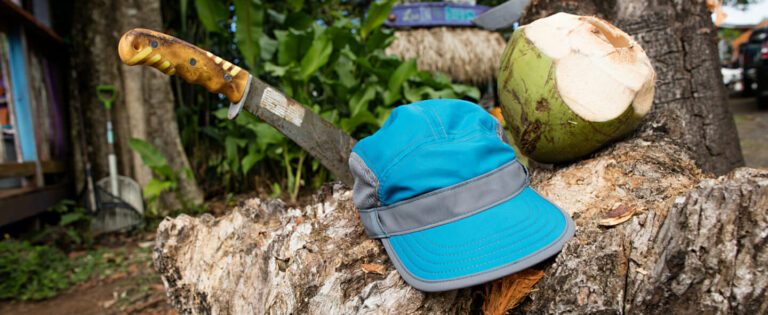The vastness of nature and the feeling of being in the great outdoors and carrying your home on your back for multiple days (or even weeks) are things you can only experience by trekking. The kit you need may vary depending on the region, season and length of your trip. Regardless of whether you’re travelling in spring, summer or autumn, it’s important to consider the weather in advance. Of course, good planning is half the battle!
The following is a basic kit list that you can adjust according to the demands of your trip.
The big four
Clothing in your layering system
1. Layer (underwear):
2. Layer (insulation):
3. Layer (weather protection):
Food: Eating and drinking
Hygiene
Other items
Optional (depending on the trip and time of year)
If you still have room in your pack
Trekking
The word trekking is usually used to describe long-distance, multi-day walks. The cool thing about it is how independent you are. Neither time, nor place is really a factor. Plus, you’re far removed from civilisation as well. Trekking is about the challenge of having to depend on yourself, being completely exposed to the elements, doing your own thing and experiencing nature in a completely new way! There is nothing better than feeling one with nature in all its various facets. True, you may find a bothy or some other kind of shelter along the way (depending on the country you’re in), but for the most part, you’re on your own!
Your equipment
So, you have to pack accordingly. Your kit will consist of the basics (similar to a hut trip) along with the “big four” (rucksack, tent, sleeping bag, sleeping mat) and cooking supplies for your trip. Of course, it’s important to choose the appropriate footwear as well. At the very least, you should have an ankle-high pair of shoes for additional stability. That way, you can avoid tearing any ligaments (like from rolling an ankle) along the way. The shoes should also have a softer, more flexible sole than mountaineering boots, since you’ll be tacking on more kilometres than you would be in the high mountains and usually won’t have to do any scrambling or climbing.
Practical things to bring along
Now, we’re going to talk about some practical little gadgets, which may not seem as useful at first glance as they actually are. Stuff sacks! Stuff sacks are something you should definitely have with you in addition to waterproof zipped bags for electronics and documents. That way, you’ll be able to keep the contents of your pack organised. Stuff sacks are available in a wide variety of sizes and colours so that you can quickly identify which sack is for laundry, clean clothes or your medication.
Another must-have: duct tape. Whether you’ve got a hole in your tent or your shoes are falling apart, duct tape can pretty much fix any problem. Just as useful is a couple metres of Paracord or a thin accessory cord. These cords are extremely tear-resistant and can be used as laces, a belt or a clothesline. Elastic bands and a couple of zip ties are also incredibly useful and hardly take up any room. They can help you tie and secure all sorts of things – perfect for whenever you need to improvise! Last but not least: tampons. And yes, for men too. Tampons can be used as a makeshift pad for deep cuts or can be used as a tinder to start a fire. Usually, just one spark is enough to get a nice, warm campfire started.
For perfectionists
If you’re a perfectionist, we recommend opening up Excel and putting together a list tailored to your individual needs. By listing weight information, quantities and food (including calorie data), you will get a good overview of how much your pack weighs, how much room you may have to spare for additional items, but also (and most important) which items may prove to be completely useless! Once you’ve got everything together, you should go through each and every item and ask yourself whether or not you really (!) need it. First-time trekkers tend to pack a lot of things they never end up using over the course of a trip, but as the saying goes, practice makes perfect. Usually, you’d begin with shorter trips in more tolerable climatic conditions, so that you can figure out what you do and don’t need for future treks.
In summary
Thus, a packing list in this form can serve as a point of reference when you’re preparing for each trekking trip. In sum, it’s important to consider the following:
- Excess gear on a trekking trip have an effect on multiple areas: a large rucksack and a corresponding amount of weight, sturdier shoes, (due to the increased amount of weight on your back), gear and clothing for all eventualities. A properly packed and organised rucksack can be a huge help (use colour-coded stuff sacks in different sizes!)
- A very important thing to consider while trekking is food: if you think about just how much your grocery basket weighed last week, you’ll know why (light and high-calorie) trekking foods were invented.
- Since you’ll be far removed from civilisation, it’s incredibly important to think about your safety as well as first aid in the event of an emergency. Thus, it is advisable (especially for first-time trekkers) to choose a trek that you know you can complete and to take a mobile phone with emergency contacts with you on your trip. This is even more important if you’re going out alone. And, don’t worry if you don’t finish. Any experience or knowledge you gain about yourself as a trekker, the weather and your equipment is valuable. It will help you not only to pack more efficiently and to optimise your approach in the future, but will even give you the know-how necessary to improvise to a certain extent later!



